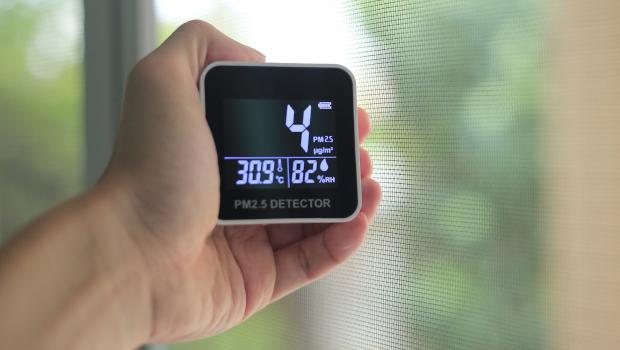
The risks of poor air quality in the workplace
In association with RS Ireland
Poor air quality and its effects on people both at home and in the workplace has been highlighted in relative frequency over the years, but never has it been more of a priority than during the pandemic. Covid-19 has certainly put the spotlight firmly on air quality in offices and buildings, demonstrating just how poor ventilation can be in many environments, and the impact of carbon dioxide (CO2) levels on health, well-being and performance.
As a society we are warned about pollution levels outside that may be detrimental to health, but for those working in indoor environments, the hazards are just as prevalent. As we all either have, or are looking to return to the workplace, employees will undoubtedly be looking for reassurance that their offices and workplaces are healthy and safe environments to return to. Additionally, with poor air quality contributing significantly to respiratory issues, lung conditions and disease, it should be a real focus for businesses and organisations, which have a duty to ensure risks to employee health and safety are effectively controlled.
The importance of effective air quality monitoring
HSA Ireland created some simple guidance on air quality, while the HSE in the UK provided some detailed guidelines – which have been updated as a result of COVID and the lifting of restrictions – covering elements such as effectively identifying poor ventilation and CO2 levels. People exhale CO2 when they breathe out, so if there is a build-up of CO2 in an area it can indicate that ventilation needs improving. Thankfully, ascertaining CO2 levels can be done effectively and easily using monitoring devices – which can then help with identification of poorly ventilated areas.
Monitoring equipment is varied in how it is powered, the application it is useful for and the pollutants it detects – as well as in price. Handheld devices that can be used to periodically check CO2 levels in an area are cost-effective and easy to use and implement as part of a regular process. A lithium battery-powered device such as the RS Pro RS96 Air Quality Meter will provide a pollutant particle counter as well as humidity and temperature reading – making it a great all-rounder which can be used in a variety of settings, from office to industrial environments. For a more permanent mains-powered device, the Werna Kombi-Sign 72 CO2 Traffic Light provides a plug-and-play visual traffic light option for ongoing monitoring and detection of climate issues.
The business benefits of prioritising indoor air quality
The impact of air quality on a business is far-reaching. The cost to society nationwide as a result of air pollution-induced illness is £20 billion, according to the Taskforce for Lung Health. While this figure includes that incurred to health services, businesses are no doubt bearing the brunt of a significant proportion of this mammoth cost in downtime and disruption in production due to employee ill-health and absence – so it is a factor not to be downgraded as there is a clear ‘bottom line’ business case for it.
Employee absence through illness should not just be defined in resulting downtime and sick pay cost, but also associated costs to get the job done, which may involve extra wages, overtime or temporary labour, and lower production.
Social responsibility is also a key part of many a business strategy, and taking necessary steps to ensure employees are working in a healthy environment is a way to demonstrate social responsibility. Healthy workers are more engaged, motivated and productive, while creating and nurturing a supportive culture through investment in an effective health protection programme encourages sustained performance.
Air quality is estimated to be responsible for around 40,000 early deaths each year, and testament to the growing emphasis on addressing it are examples of investment, such as the £9 million+ which has been awarded this year by UK Research and Innovation (UKRI) to research projects on indoor air quality and its effects. These include a University of Manchester project – the ‘Air Pollution Hazard Identification Platform’ – which is the development of a platform to enable scientists to rank the toxicity of common air pollutants, focusing on links between air quality and neurological disease. It will be used to inform policy decisions about the sorts of pollution to avoid to reduce ill health, as well as the potential to be used in future to study other diseases.
So as the agenda for cleaner indoor air comes back to the fore, and in pandemic times, it’s wise to get on board with taking steps to achieving better air quality in the workplace, for employees, production and the bottom line. Working with providers such as RS to gain knowledge on regulations, and guidance on available equipment to aid in the mission, can get you on the road to a happier, healthier workplace.







Subscribers 0
Fans 0
Followers 0
Followers